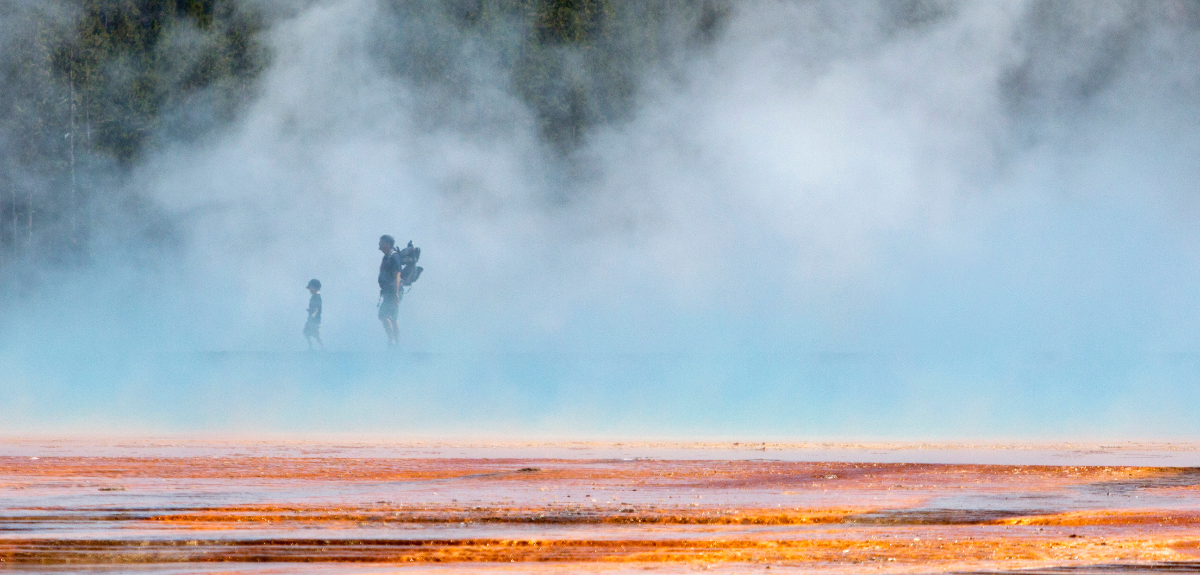Driving Titus Canyon Road in Death Valley
Image Caption:
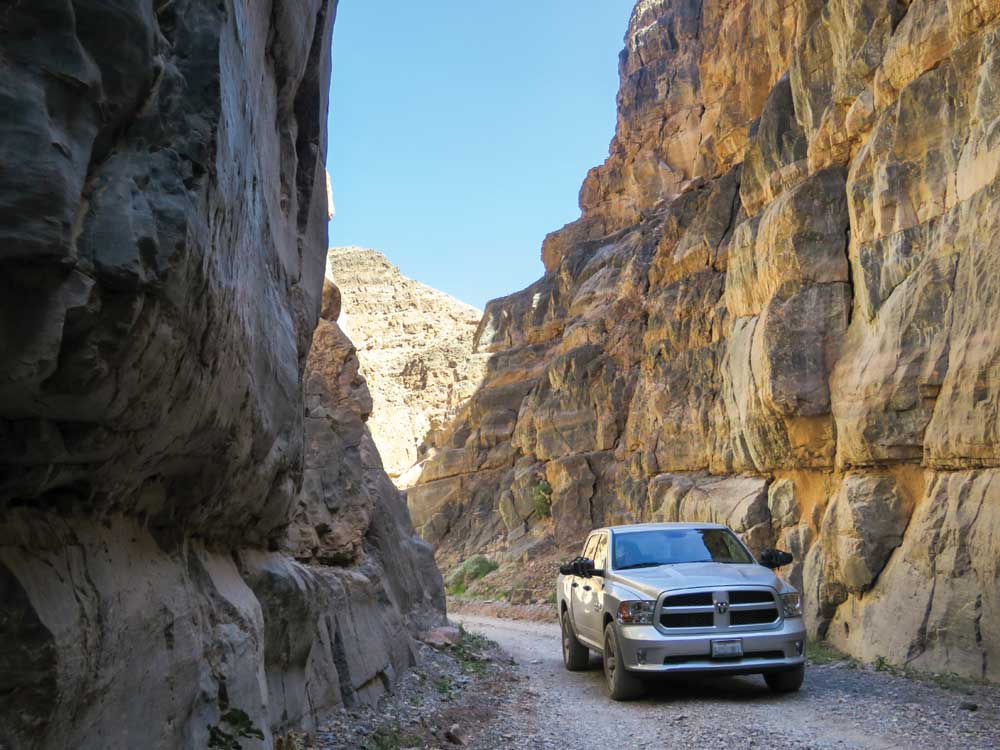
Leave your RV at the campground before navigating the tight passages and towering rock walls of the Titus Canyon Narrows, a spectacularly scenic but challenging backcountry stretch.
The detour was Titus Canyon Road, a mostly one-way route that threads through the backcountry for about 30 miles in the Grapevine Mountains along the eastern side of Death Valley. To get to the canyon, we drove into Nevada a few miles and then veered onto a gravel road that warned that only high-clearance vehicles, and ideally those with four-wheel drive, should proceed. Our Ram 2500 pickup fit those requirements, so we charged ahead.
We recommend planning ahead for enough time to do this drive during daylight hours.
The first thing that struck us was the contrast of the landscape on the eastern side of the mountains compared to the main valley. Scrub vegetation in varying shades of green covered the gradually upsloping terrain. It was nothing like the stark gray, tan and black we had seen in much of the rest of the park. The mountains ahead were relatively
gentle and didn’t display the variety of geological movement and changes that so define Death Valley.
Initially, the road was straight with a wide gravel surface, but it soon narrowed to one lane and varied in composition from packed reddish soil to sometimes coarse rock that required careful navigation to avoid an almost stairstep surface. It wound up and down numerous hills and through varying canyon widths. I was surprised every time I got a glimpse down a wide canyon and realized we still had a 3,000- to 4,000-foot elevation drop before we would be anywhere near the end of the road.
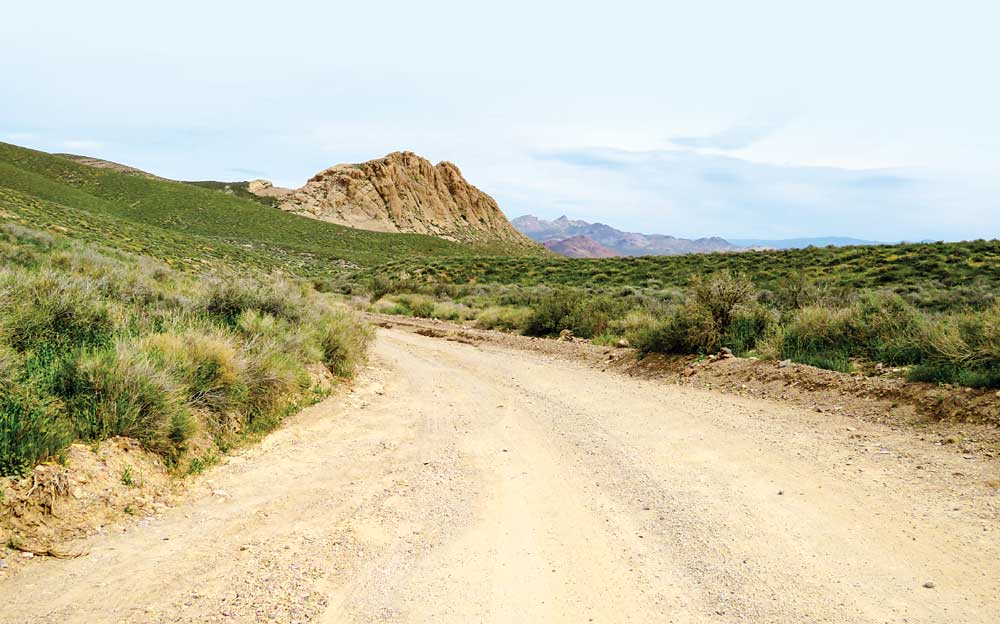
For 27 of its 30 miles, Titus Canyon Road is a well-maintained dirt drive that travels one way only, from east to west.
As we progressed, the landscape became the highlight of the trip. Everywhere we looked were examples of eons of change: uplifted strata, wind- and water-shaped spires, and polished rock walls. The road itself varied, too. There were short stretches along flat valley floors, then tight curves with sharp drop-offs, and places where we had to pull in our oversize side-view mirrors to keep them from being slapped against the truck by trees or, more dangerously, rock walls.
The road offered more than just a geology lesson. There was history, as well. The canyon had been mined for copper and lead, and numerous open mine shafts were visible. We even passed a ghost town. Granted, Leadfield is not that old — its short heyday was from 1925 to 1926 — but some of the old structures and mine tailings are still there. Even older were the Native American petroglyphs near a lightly seeping natural spring, showing this canyon had been used as a thoroughfare long before we made the trip.
The only reason we were able to drive through Titus Canyon was because of Leadfield. The early route to the mines must have been a rough wagon trail, but once promoters and investors got involved in 1925, more than $60,000 was spent to build the 15-mile road. Considered an engineering marvel at that time, it begins at 4,000 feet in Leadfield before climbing through 5,200-foot passes and then descending to what is now Nevada Route 374.
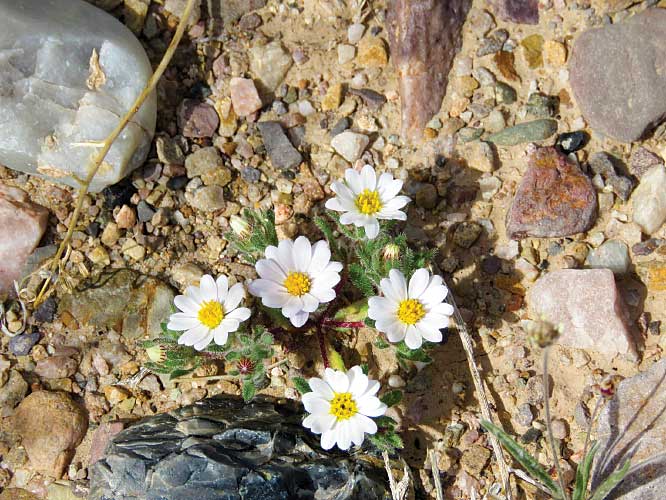
Following a rainy winter, the desert floor and surrounding foothills come alive with blooming wildflowers in spring .
There were big plans for Leadfield, but financial failures and low-grade ore caused most of the mines to close in 1926. The U.S. Postal Service also had high hopes.
It opened one of its shortest-lived post offices in August 1926 and closed it six months later. By late 1927, it was reported that only seven miners were left, and they were working with hand tools rather than the heavy equipment originally hauled down the road.
It’s hard to pick a favorite area of the road, but the 1½-mile Titus Canyon Narrows comes close. Here the towering rock walls close in, and you are looking upward at least 200 feet to see the sky. You can see only a short distance ahead as the road winds snakelike through this tight part of the canyon, limiting vision to a few dozen yards before the next sharp bend.
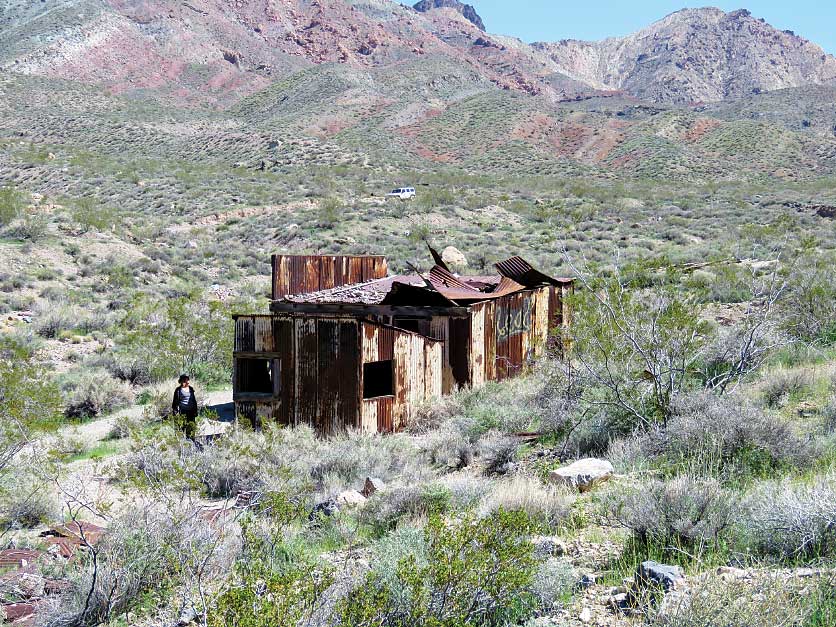
Rusted metal buildings are all that remain of short-lived Leadfield, a mining-town-cum-ghost-town that is reachable from Titus Canyon Road.
Just past the narrows, the road joins a short two-way stretch that connects to Scotty’s Castle Road and Grapevine Canyon. Having been damaged in a thunderstorm and the resulting flash floods, most of the road and the desert mansion it is named for are closed and not likely to reopen until 2020.
After miles of challenging driving, particularly on the final stretch, I let out a deep breath and relaxed behind the wheel. It wasn’t an easy drive, but it certainly was worthwhile. We had already explored parts of Death Valley, but Titus Canyon gave us a wonderful combination of history, geology and natural beauty all wrapped up in a spectacular 30-
mile drive.
Death Valley Drive
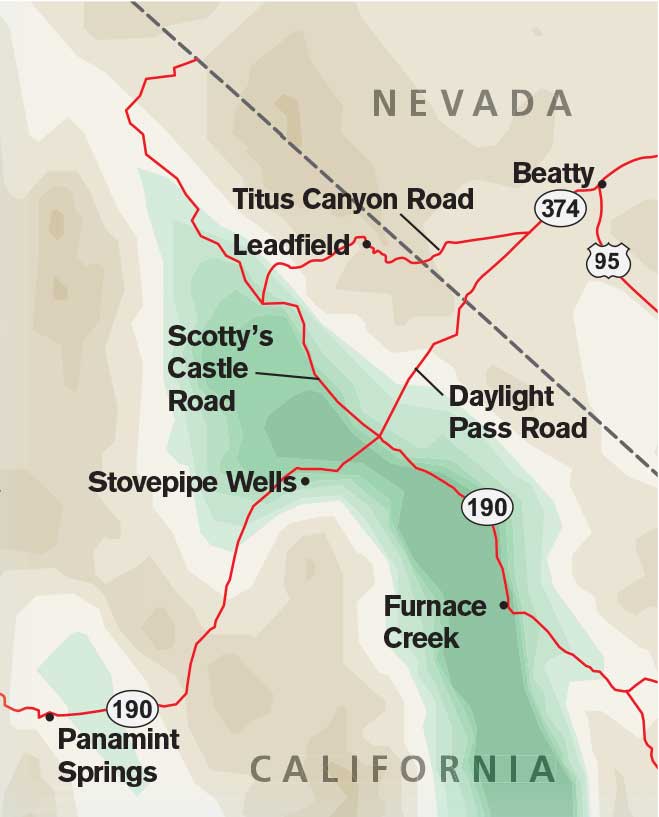
Free Ride
On April 21, 2018, the first day of National Park Week, admission to Death Valley is on the house.
The one-way section of Titus Canyon Road starts off Daylight Pass Road and travels from east to west. The 27-mile maintained dirt drive is suitable for high-clearance two- and four-wheel-drive vehicles only. The shorter two-way section connects to Scotty’s Castle Road and provides hiking access to the stunning Titus Canyon Narrows. The 3-mile graded-gravel road is accessible by most vehicles but not suitable for larger trailers because of limited turn-around space at the trailhead.
This backcountry route explores a fraction of Death Valley’s more than 3 million acres and 1,300 miles of paved and dirt roads. To help visitors drive them safely, park staff regularly updates road conditions on a dedicated Facebook page.
www.facebook.com/deathvalleyroadconditions
DESERT OASES
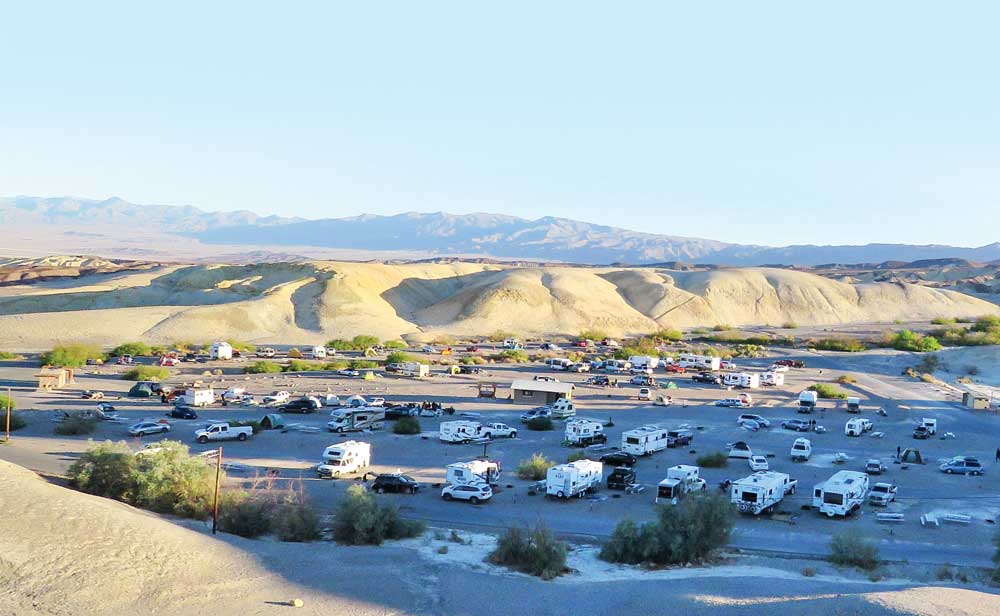
One of eight RV campgrounds run by the National Park Service in Death Valley, Texas Springs is open from mid-October through May with 92 first-come, first-served sites.
FURNACE CREEK
Of the eight Death Valley National Park campgrounds that accommodate RVs, only one, centrally located Furnace Creek Campground, has full RV hookups and takes reservations.
877-444-6777 | www.recreation.gov
Managed by Xanterra Parks and Resorts, the former Furnace Creek Resort reopened last fall with a facelift and a new name, Oasis at Death Valley, but still offers dry RV sites at Fiddlers’ Campground.
800-236-7916 | www.oasisatdeathvalley.com/lodging/fiddlers-campground
PANAMINT SPRINGS
On the west side of Death Valley, the family-owned and -operated Panamint Springs Resort welcomes RVers with 10 full-hookup sites and 28 dry sites.
775-482-7680 | www.panamintsprings.com/accommodations/camping-rv
STOVEPIPE WELLS
Part of the Stovepipe Wells Village complex in the center of the park and managed by Death Valley Lodging Company, Stovepipe Wells RV Park has 14 sites with RV hookups.
760-786-2387 | www.deathvalleyhotels.com/our-hotel/rv-park-and-camping
For More Information
Death Valley National Park | 760-786-3200 | www.nps.gov/deva
Readers Respond
Just a comment on Titus Canyon in Death Valley. We were advised by rangers at Stovepipe Wells that this “scenic” road was not that big a deal. Luckily, we have a very good four-wheel-drive truck (Ram Rebel), and four-wheel drive or at least all-wheel drive is a must on a lot of this road. The road is one-way at a point, since it is wide enough for only one vehicle. Most other vehicles we saw on the entire drive where Jeeps. Parts of road had very tight blind-spot curves with at times over 1,000-foot drop-offs. This pretty much scared my wife to death and was a bit unnerving for me. I don’t scare easily! It is an amazing road built in the 1920s with beautiful views and interesting history, and is well maintained by the National Park Service, as are all gravel and dirt roads we went on in this park. Just be prepared if you want to drive through Titus Canyon.
Dennis and Sandra McInish
This brought back memories, some not so good. Years back, my wife and I took our truck and trailer to Death Valley to see the wildflowers. Bad news: No rain that year, so no flowers. We camped at Stovepipe Wells and followed the path the Taylors took to Titus Canyon. At the top of the canyon road, I decided to put the truck in four-wheel drive, and the truck wouldn’t move. I figured it was the transfer case, and the only thing I could do was coast the 10 miles down the canyon, stopping a couple of times to cool the brakes. We made it to the parking lot at the bottom of the canyon where we could call a tow truck. We were towed to Porterville, and it took five days to get the parts. We rented a car and drove back to the campground to find the trailer full of sand — we had left the windows open, and there was a big sandstorm. I hope the next time there will be flowers. With our new truck and trailer, we are ready.
Tom Vadon


